Parametric Design of a New Float-Type Wave Energy Generator and Numerical Simulation of Its Hydrodynamic Performance
Abstract
:1. Introduction
2. Mechanical Theory
2.1. Basic Control Equations
2.2. Turbulence Model
2.3. Wave Theory
3. Design and Energy Conversion Mechanism
3.1. China’s Offshore Wave Environment
3.2. Design Proposal
3.3. Characteristics of the Energy Conversion
3.4. Kinematic and Dynamic Characterizations
4. CFD Simulation Analysis of a New Float-Type Wave Energy Device
4.1. Setup of CFD Simulation
4.2. Computational Domain and Meshing
4.3. Analysis of Device Simulations during One Wave Cycle
4.4. Numerical Study of the Effect of Hydrodynamic Performance of Power Generating Units over the Full Operating Cycle
4.5. Numerical Study of the Effect of Structural Parameters on the Hydrodynamic Performance of Power Generation Units
5. Conclusions
- We constructed a numerical wave pool using STAR-CCM+ and applied overlapping grid technology to simulate the movement and power generation efficiency of a new float-type wave energy power generation device under Stokes fifth-order waves. Our findings indicate that this numerical method accurately captures changes in complex flow fields, and the simulated waves closely match the theoretical waves. Hence, it can serve as a reliable tool for numerical simulation of this device.
- In operation following the stability of the law, the new type of float wave power generating device in saltwater to perform the cycle movement may be viewed as the superposition of the movement of countless cycles. The device’s speed drops as it moves from the horizontal to the crest of the movement of the moment, and the speed declines ever faster, according to the examination of the device’s movement in a cycle. The pendulum velocity of the device increases slowly and then lowers quickly as it transitions from the crest to the trough. The device’s motion speed in the vertical direction gradually increases until it reaches its maximum speed at the wave peak as it passes from the wave valley to the horizontal plane. The torque and speed of the rotating blades have a significant impact on the device’s output power.
- According to the structural design and optimization of the device, it was found that the overall movement of the device is less affected by changes in the number of blades, and regardless of the changes in the number of blades, the vertical displacement and velocity of the device exhibit periodic changes. Under the influence of waves, the moment of the blades varies on a regular basis, and the moment of the blades rises as the number of blades grows. A suitable increase in the number of blades can cause the turbofan to create a greater rotating moment because the pressure differential at the leading edge of the blade surface steadily increases with the number of blades. The output power of the device increases with the number of blades, and the five blades turbofan performs better overall in terms of equipment cost, operation, and power generation efficiency.
Author Contributions
Funding
Data Availability Statement
Acknowledgments
Conflicts of Interest
References
- Side, J.; Gallego, A.; James, M.; Davies, I.; Heath, M.; Karunarathna, H.; Venugopal, V.; Vögler, A.; Burrows, M. Developing methodologies for large scale wave and tidal stream marine renewable energy extraction and its environmental impact: An overview of the Tera Watt project. Ocean Coast. Manag. 2017, 147, 1–5. [Google Scholar] [CrossRef]
- Leeney, R.H.; Greaves, D.; Conley, D.; O’Hagan, A.M. Environmental Impact Assessments for wave energy developments—Learning from existing activities and informing future research priorities. Ocean Coast. Manag. 2014, 99, 14–22. [Google Scholar] [CrossRef]
- Venugopal, V.; Nemalidinne, R.; Vögler, A. Numerical modelling of wave energy resources and assessment of wave energy extraction by large scale wave farms. Ocean Coast. Manag. 2017, 147, 374–378. [Google Scholar] [CrossRef]
- Wang, X.; Liang, H.; Qiao, D.; Yan, J.; Ning, D.; Ou, J. Hardware-In-the-Loop test for the optimal damping identification of oscillating buoy wave energy converters. Ocean Eng. 2023, 287, 115730. [Google Scholar] [CrossRef]
- Salter, S.H. Wave power. Nature 1974, 249, 720–724. [Google Scholar] [CrossRef]
- Korde, U.A. Phase control of floating bodies from an on-board reference. Appl. Ocean Res. 2001, 23, 2512–2562. [Google Scholar] [CrossRef]
- Eriksson, M.; Isberg, J.; Leijon, M. Hydrodynamic modelling of a direct drive wave energy converter. Int. J. Eng. Sci. 2005, 43, 1377–1387. [Google Scholar] [CrossRef]
- Babarit, A.; Clément, A.H. Optimal latching control of a wave energy device in regular and irregular waves. Appl. Ocean Res. 2006, 28, 77–91. [Google Scholar] [CrossRef]
- De Backer, G.; Vantorre, M.; Frigaard, P.; Beels, C.; De Rouck, J. Bottom slamming on heaving point absorber wave energy devices. J. Mar. Sci. Technol. 2010, 15, 119–130. [Google Scholar] [CrossRef]
- Negri, M.; Malavasi, S. Wave Energy Harnessing in Shallow Water through Oscillating Bodies. Energies 2018, 11, 2730. [Google Scholar] [CrossRef]
- Marchesi, E.; Negri, M.; Malavasi, S. Development and analysis of a numerical model for a two-oscillating-body wave energy converter in shallow water. Ocean Eng. 2020, 214, 107765. [Google Scholar] [CrossRef]
- Zhang, H.; Zhou, B.; Vogel, C.; Willden, R.; Zang, J.; Geng, J. Hydrodynamic performance of a dual-floater hybrid system combining a floating breakwater and an oscillating-buoy type wave energy converter. Appl. Energy 2020, 259, 114212. [Google Scholar] [CrossRef]
- Curto, D.; Franzitta, V.; Guercio, A. Sea Wave Energy. A Review of the Current Technologies and Perspectives. Energies 2021, 14, 6604. [Google Scholar] [CrossRef]
- Khan, M.Z.A.; Khan, H.A.; Aziz, M. Harvesting Energy from Ocean: Technologies and Perspectives. Energies 2022, 15, 3456. [Google Scholar] [CrossRef]
- Ahn, S.; Haas, K.A.; Neary, V.S. Wave energy resource characterization and assessment for coastal waters of the United States. Appl. Energy 2020, 267, 114922. [Google Scholar] [CrossRef]
- Plummer, M.L.; Feist, B.E. Capturing energy from the motion of the ocean in a crowded sea. Coast. Manag. 2016, 44, 4644–4685. [Google Scholar] [CrossRef]
- Zheng, C. Theoretical Research on the Utilization of Renewable Energy (Wave Energy, Wind Energy) Resources at Sea. Ph.D. Thesis, National University of Defense Technology, Changsha, China, 2020. [Google Scholar]
- Chen, W.; Dolguntseva, I.; Savin, A.; Zhang, Y.; Li, W.; Svensson, O.; Leijon, M. Numerical modelling of a point-absorbing wave energy converter in irregular and extreme waves. Appl. Ocean Res. 2017, 63, 901–905. [Google Scholar] [CrossRef]
- Wang, X.S.; Wang, L.H.; Song, X.F.; Ning, B. 3D Wave Simulation Basing on VOF Method and Dynamic Grid Technology. Adv. Mater. Res. 2013, 774, 3443–3446. [Google Scholar] [CrossRef]
- Kotb, A.T.M.; Nawar, M.A.A.; Abd El Maksoud, R.M.; Mohamed, M.H. Comprehensive and synergistic analysis of geometry effect on an axial turbine performance for wave energy conversion. Ocean Eng. 2021, 233, 109212. [Google Scholar] [CrossRef]
- Noel, A.B.; Abdaoui, A.; Elfouly, T.; Ahmed, M.H.; Badawy, A.; Shehata, M.S. Structural health monitoring using wireless sensor networks: A comprehensive survey. IEEE Commun. Surv. Tutor. 2017, 19, 1403–1423. [Google Scholar] [CrossRef]
- Cambuli, F.; Ghisu, T.; Virdis, I.; Puddu, P. Dynamic interaction between OWC system and Wells turbine: A comparison between CFD and lumped parameter model approaches. Ocean Eng. 2019, 191, 106459. [Google Scholar] [CrossRef]
- Setoguchi, T.; Takao, M. Current status of self rectifying air turbines for wave energy conversion. Energy Convers. Manag. 2006, 47, 2382–2396. [Google Scholar] [CrossRef]
- Zhang, Y.; Wu, P.; Duan, M. A mesh-independent technique to evaluate stress singularities in adhesive joints. Int. J. Adhes. Adhes. 2015, 57, 105–117. [Google Scholar] [CrossRef]
- Zhang, Y.; Li, D.Q.; Hong, S.H.; Zhang, M. Design of a new oscillating-buoy type wave energy converter and numerical study on its hydrodynamic performance. Hrčak 2023, 74, 145–168. [Google Scholar] [CrossRef]
- Falnes, J. Wave-energy conversion through relative motion between two single-mode oscillating bodies. J. Offshore Mech. Arct. Eng. 1999, 121, 32–38. [Google Scholar] [CrossRef]
- Zhang, Y.; Duan, M.; Wang, Y.; Chu, G. Analytical study of the strength of adhesive joints of riser pipes. Ships Offshore Struct. 2015, 10, 545–553. [Google Scholar] [CrossRef]
- Cui, Y.; Hyun, B.-S. Numerical study on Wells turbine with penetrating blade tip treatments for wave energy conversion. Int. J. Nav. Archit. Ocean Eng. 2016, 8, 4564–4565. [Google Scholar] [CrossRef]
- Zhao, X.; Xue, F.; Chen, L.; Göteman, M.; Han, D.; Geng, J.; Sun, S. Hydrodynamic analysis of a floating platform coupled with an array of oscillating bodies. Ocean Eng. 2023, 287, 115439. [Google Scholar] [CrossRef]
- Cui, Y.; Zhao, H. Marine renewable energy project: The environmental implication and sustainable technology. Ocean Coast. Manag. 2022, 232, 106415. [Google Scholar] [CrossRef]


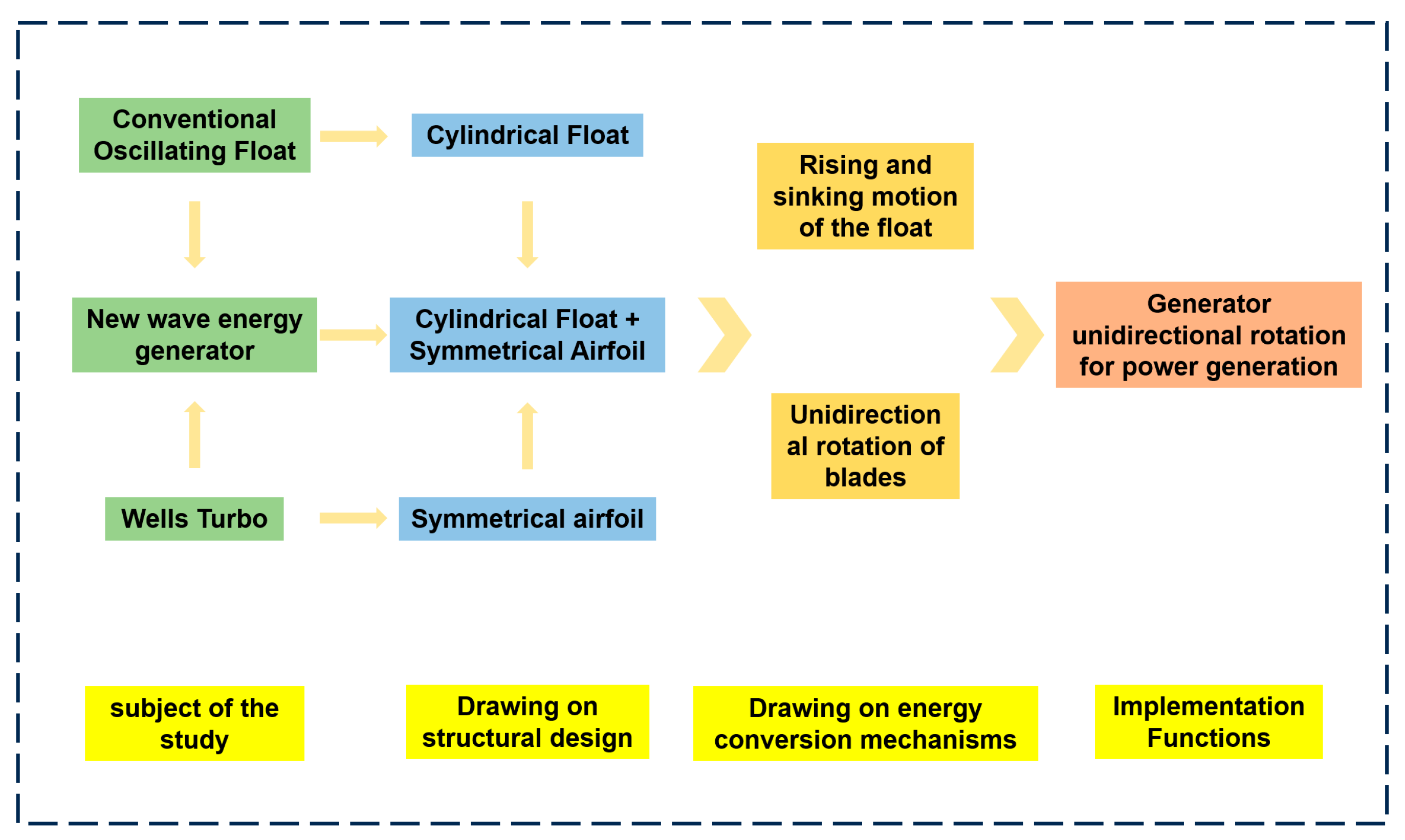
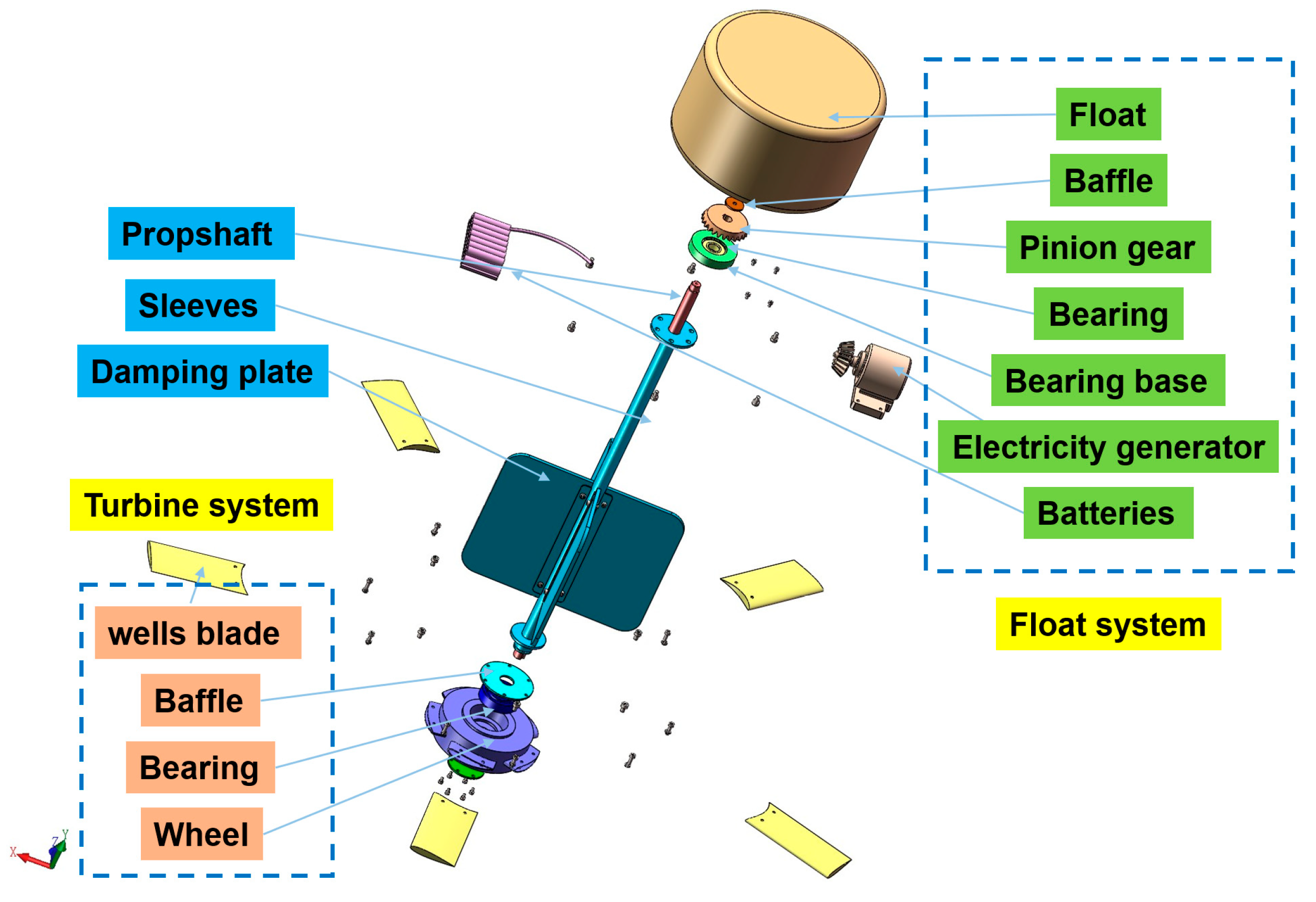
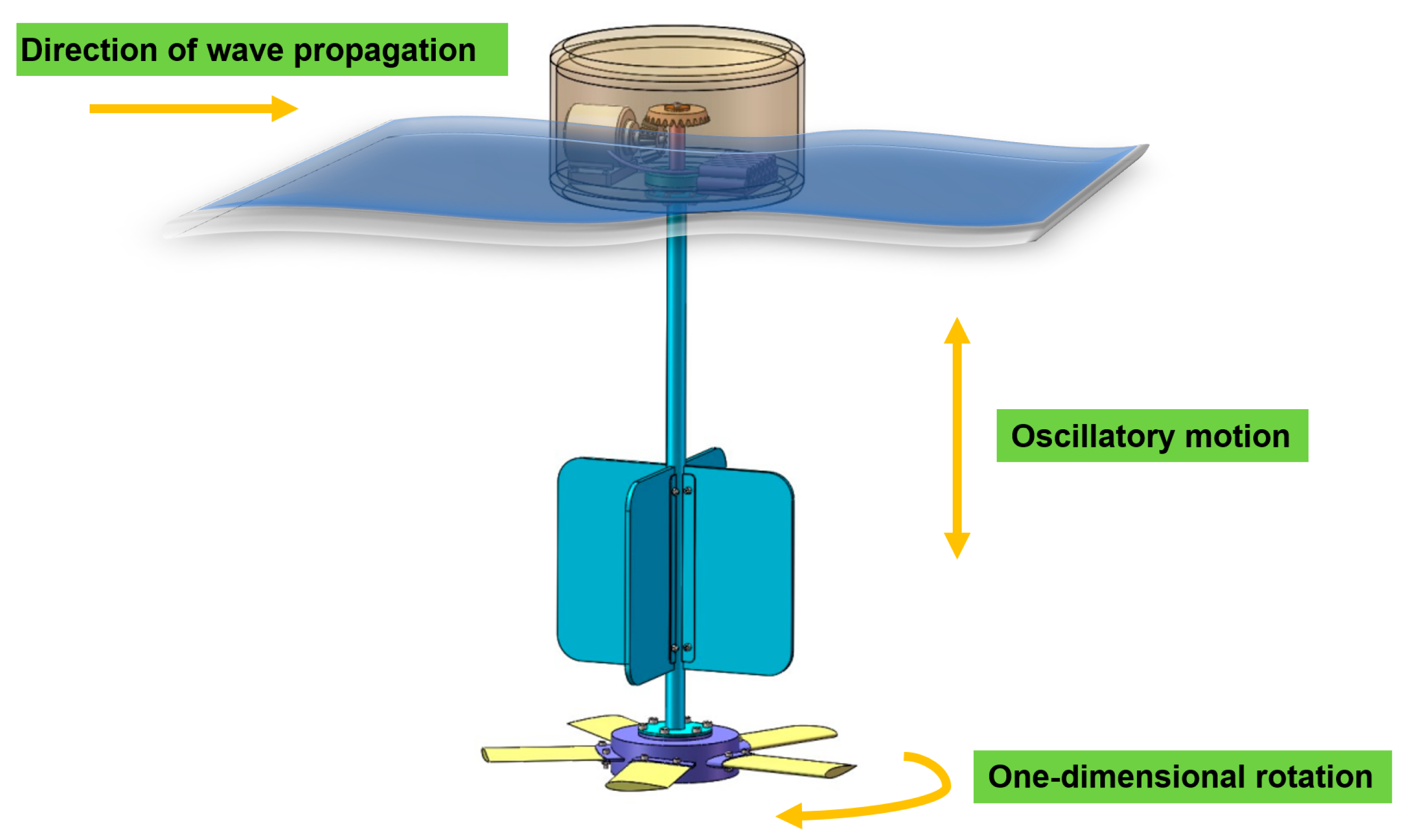

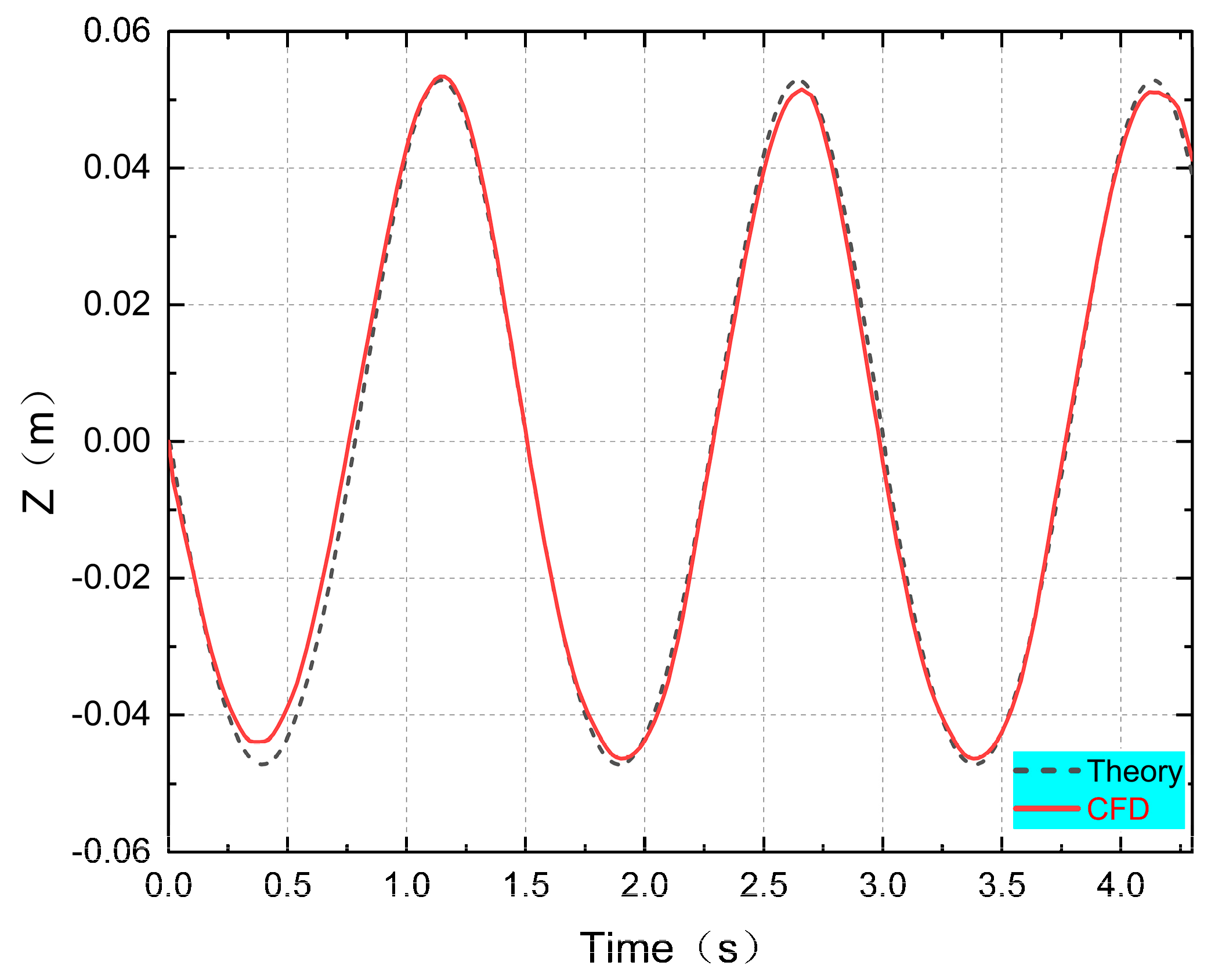

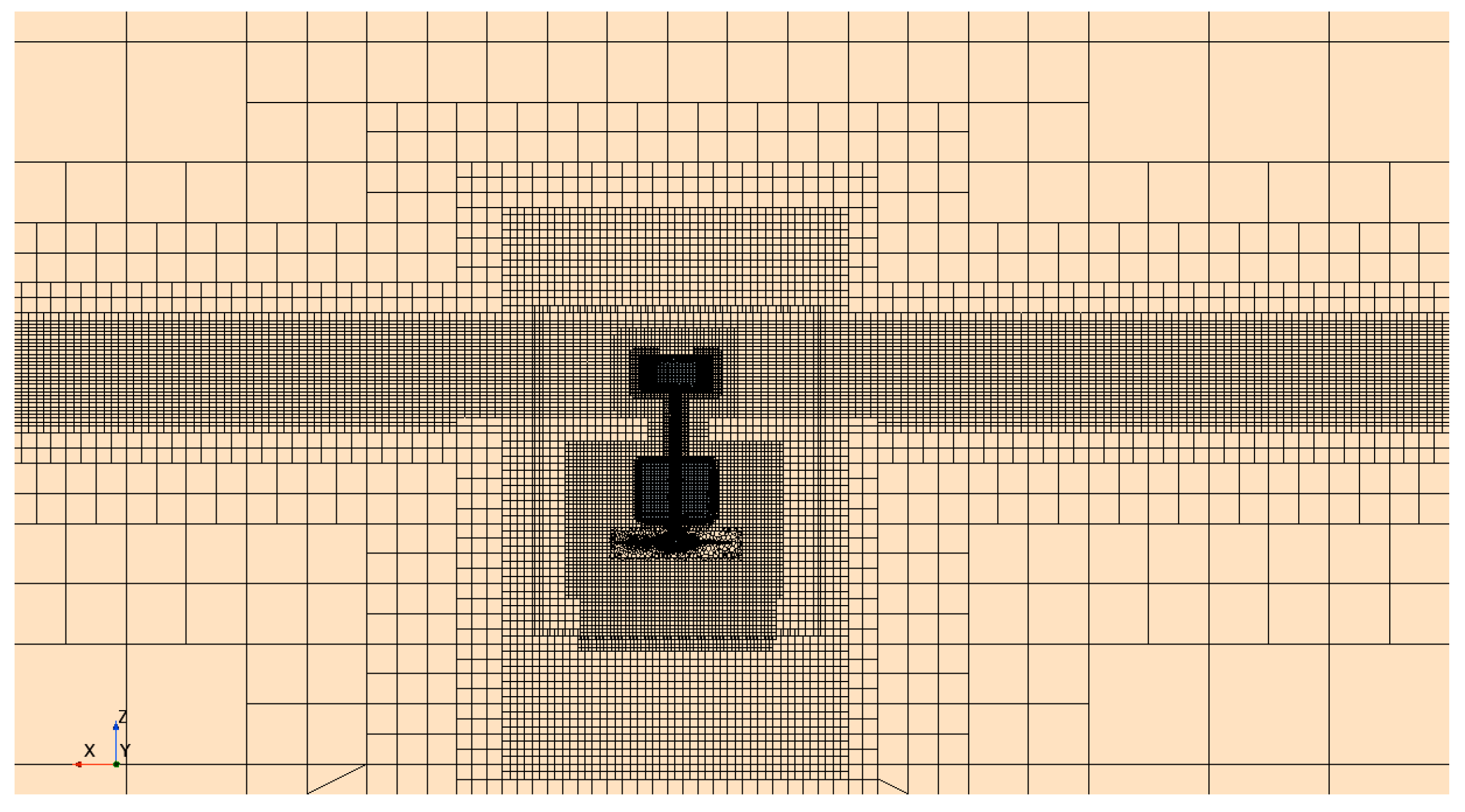
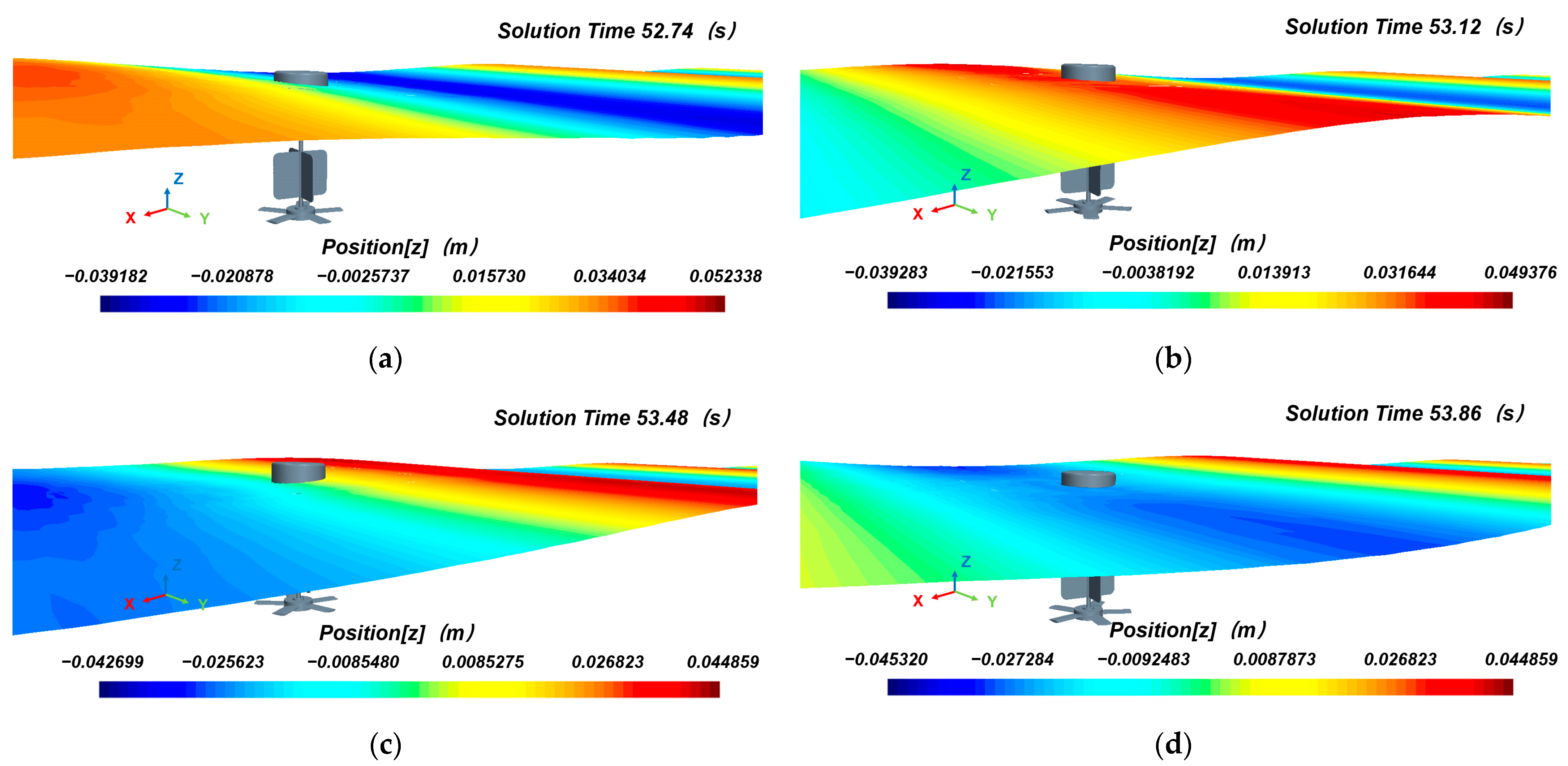
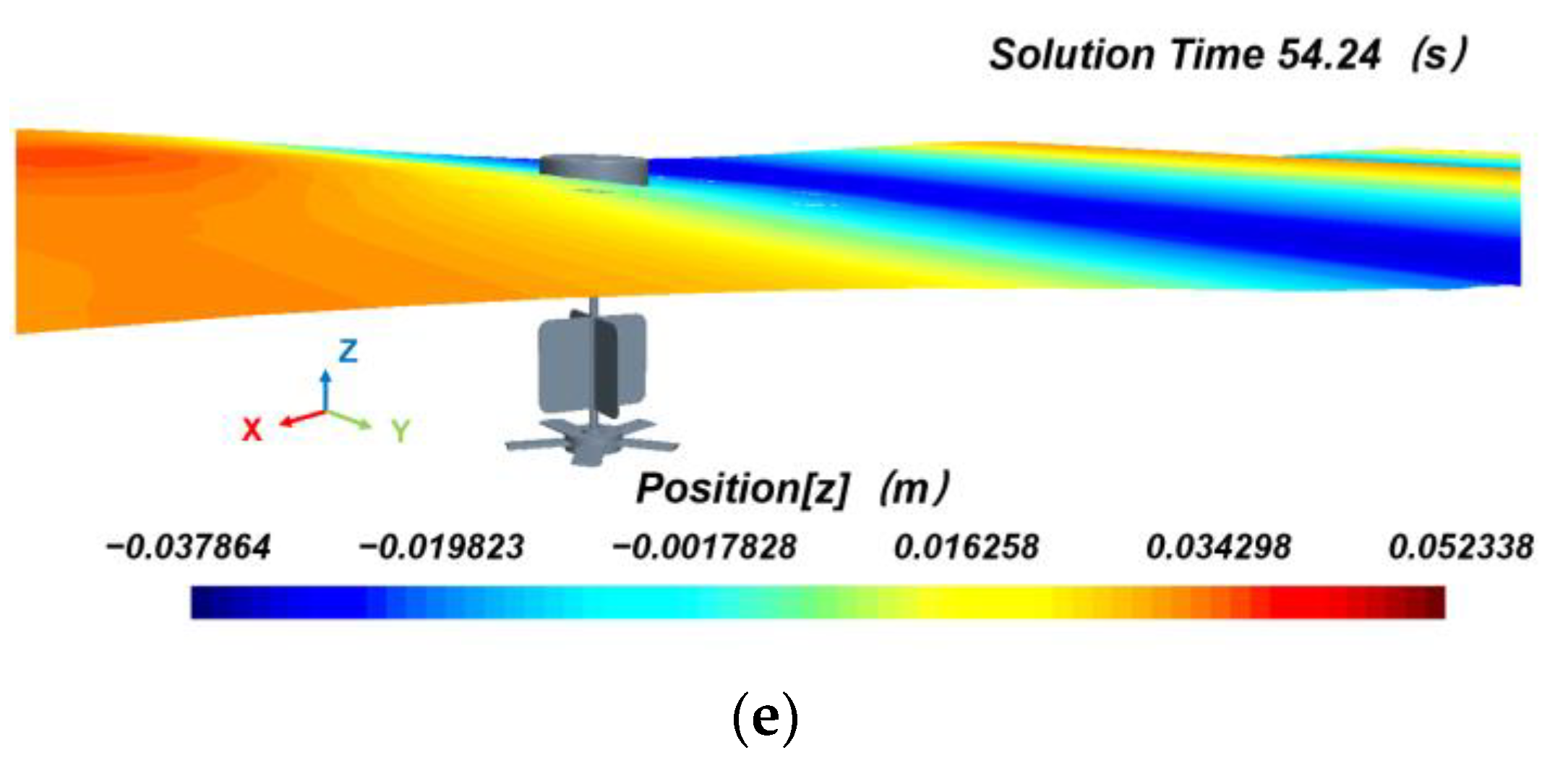
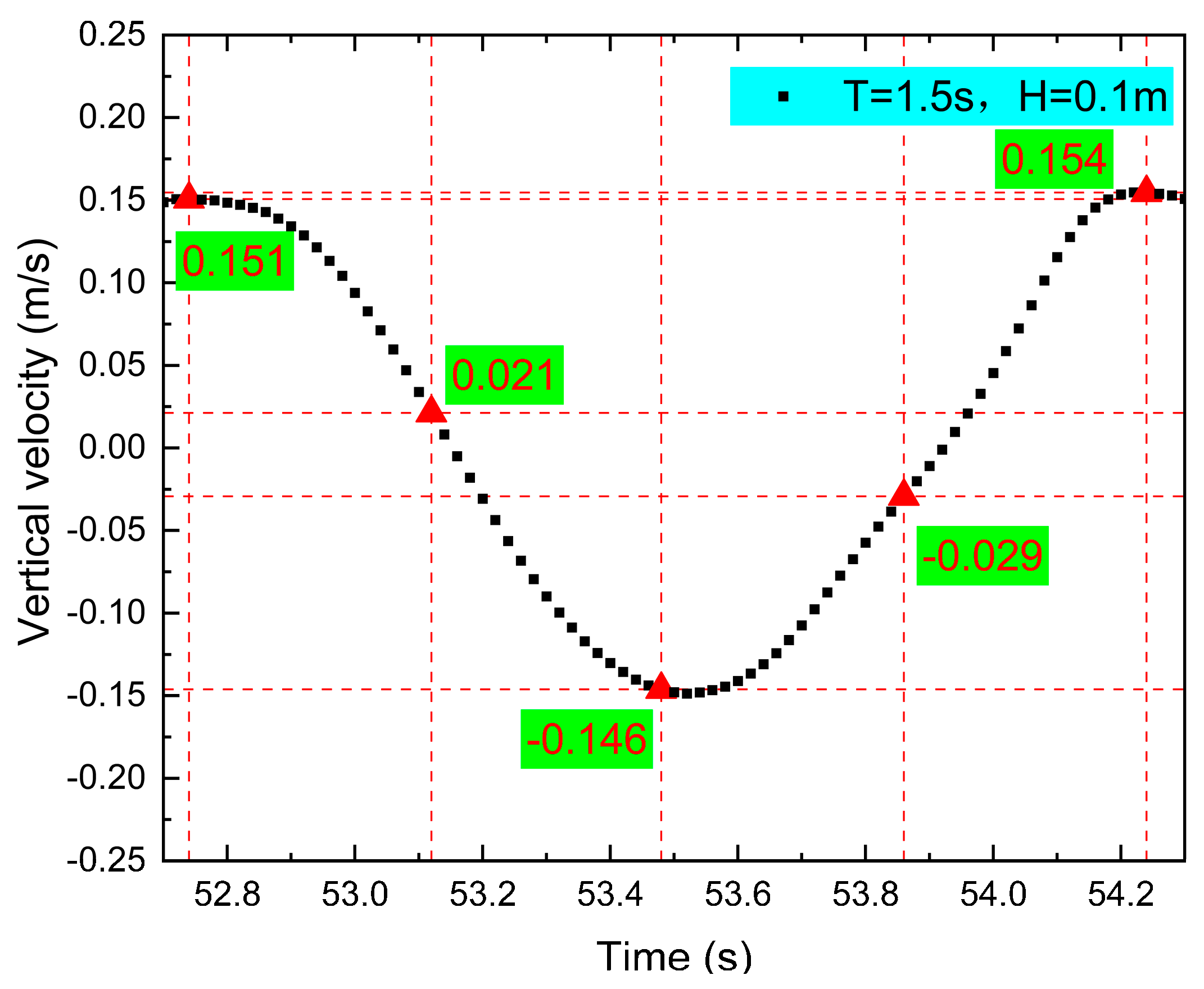
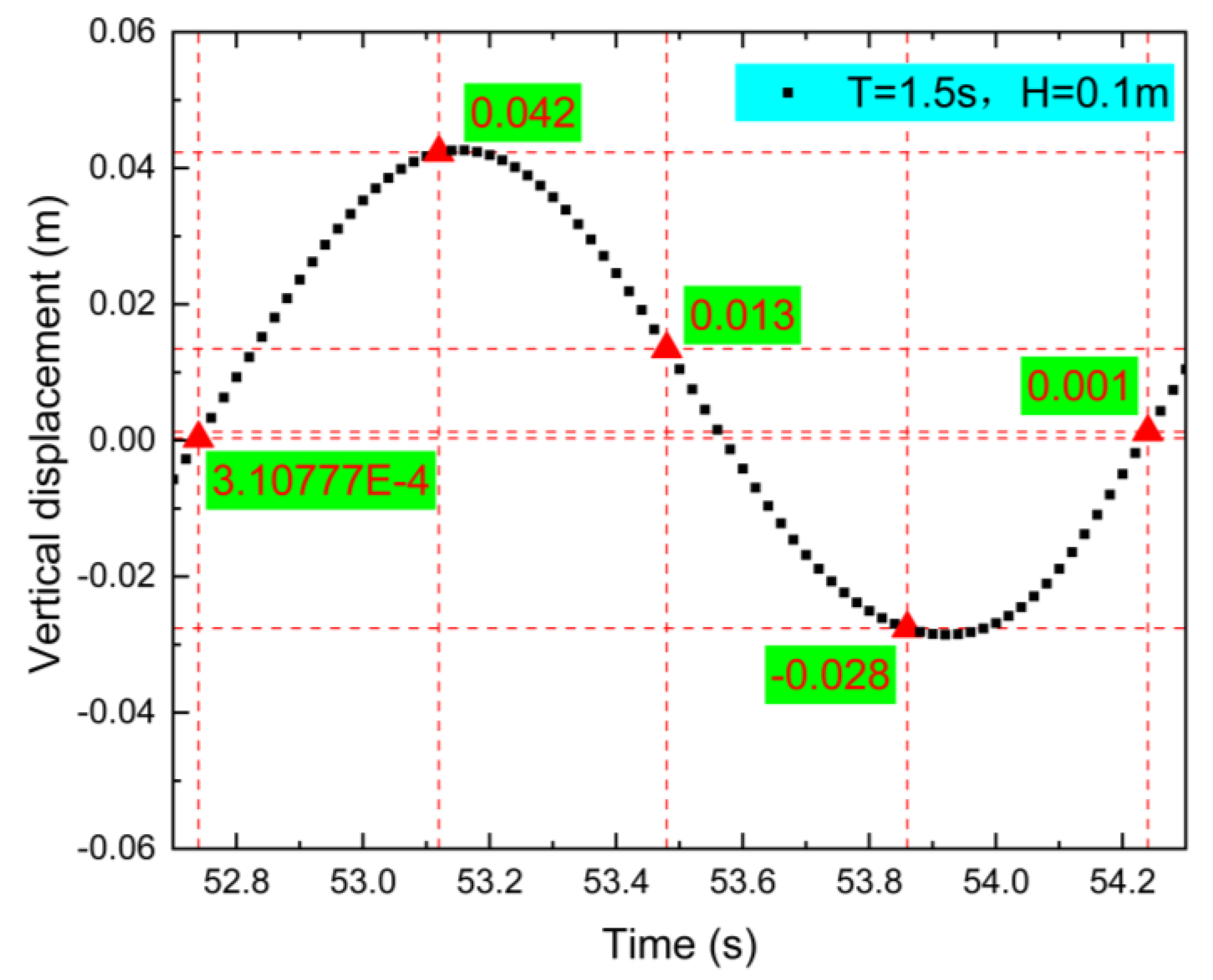
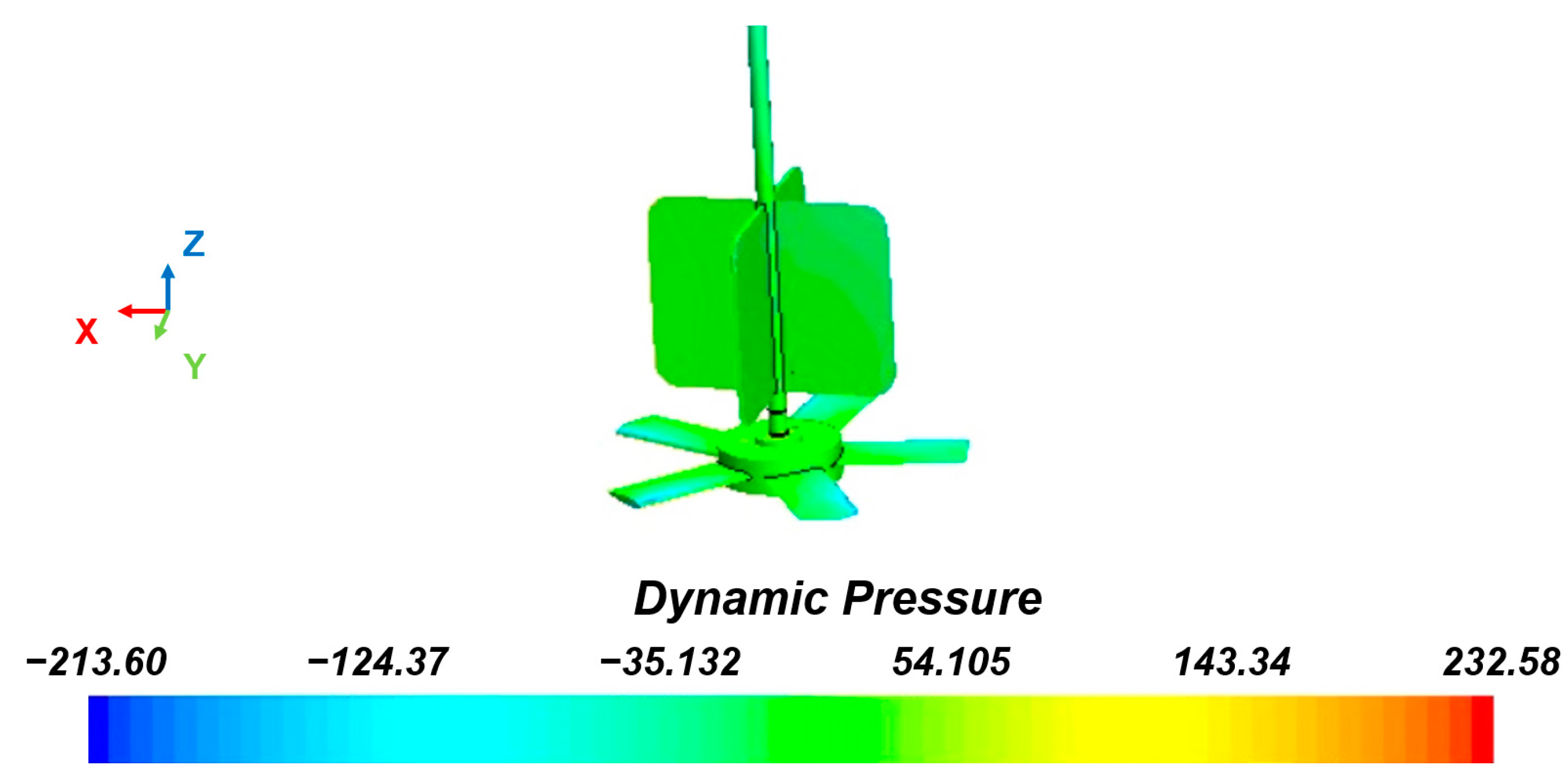
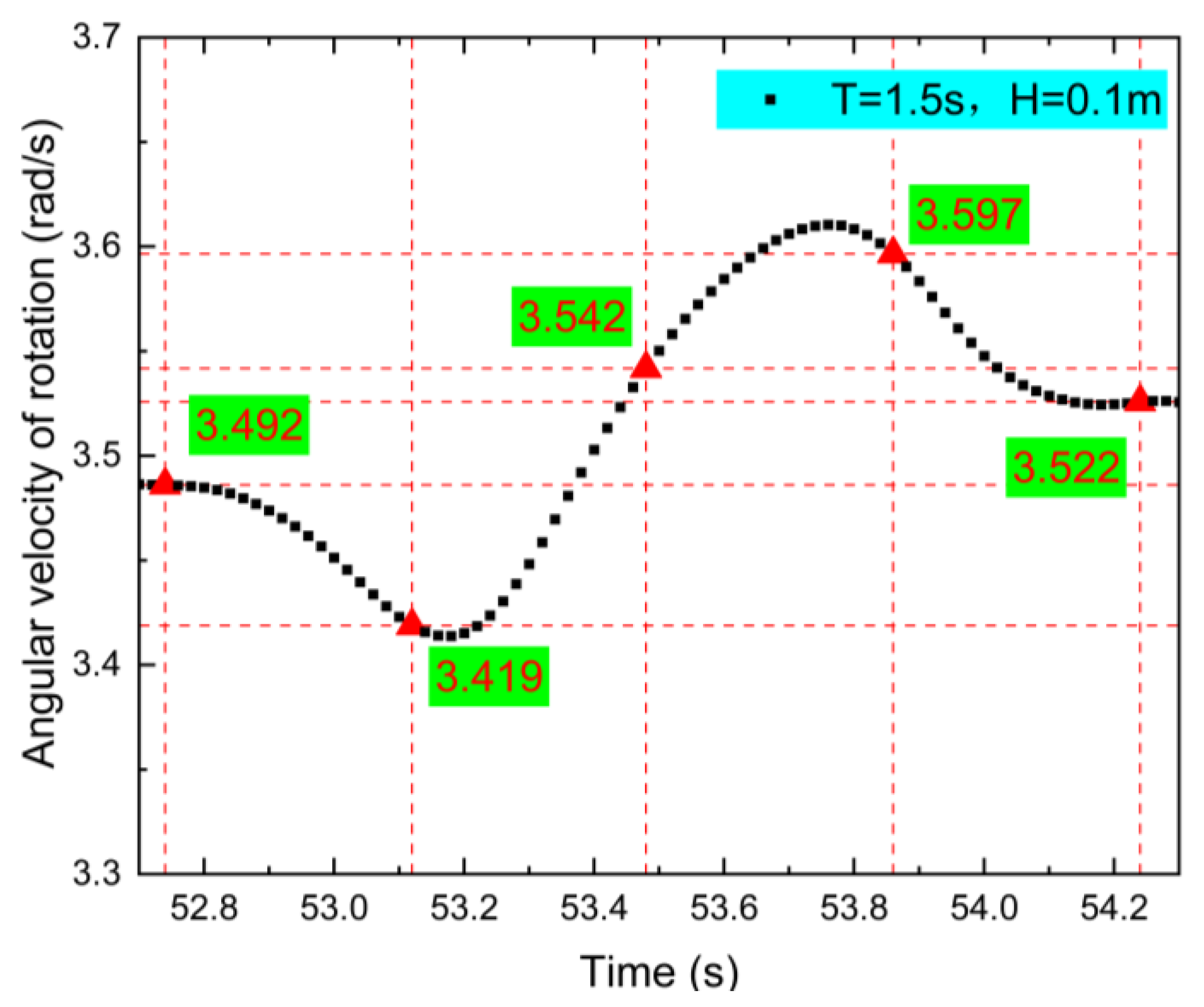
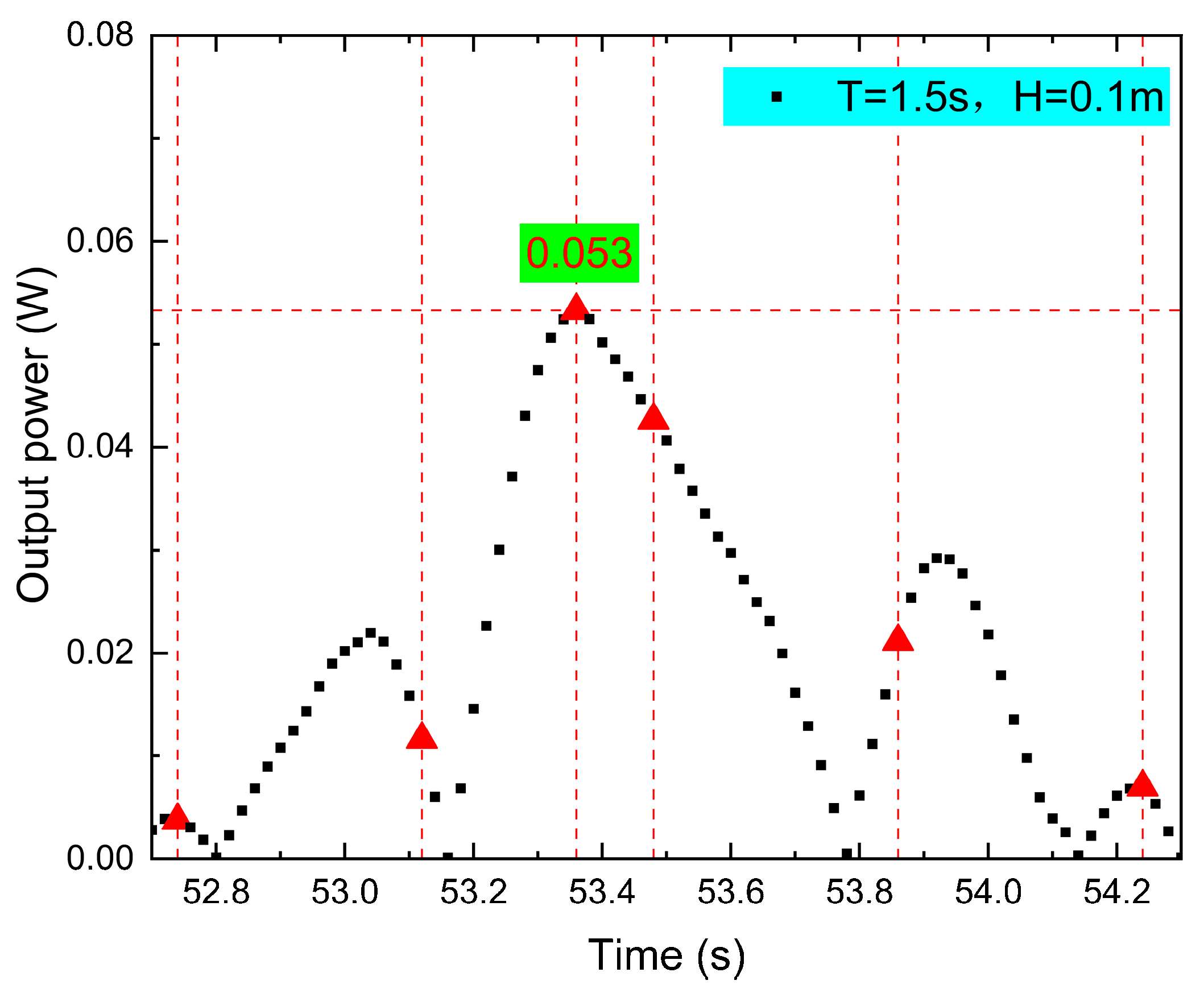
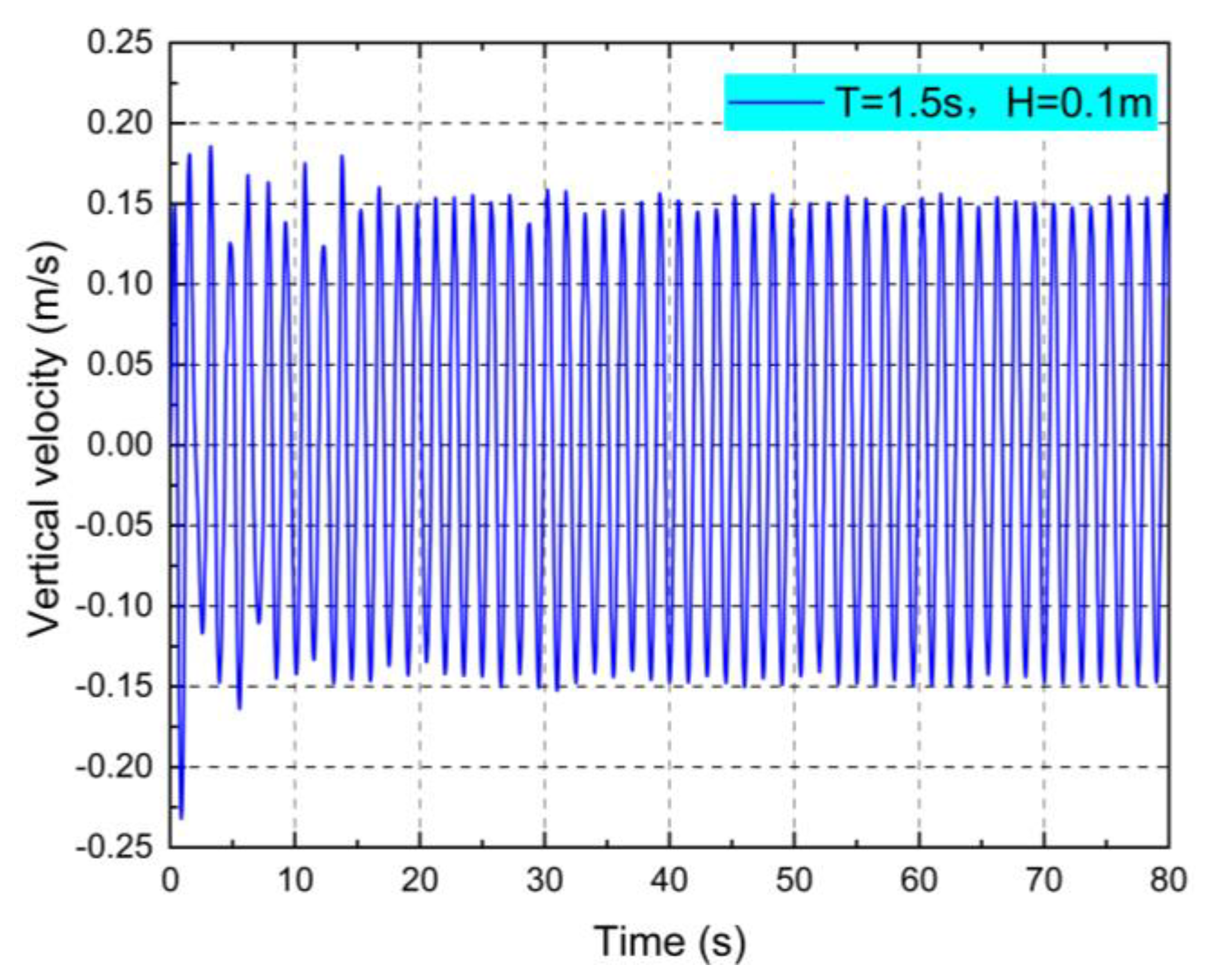

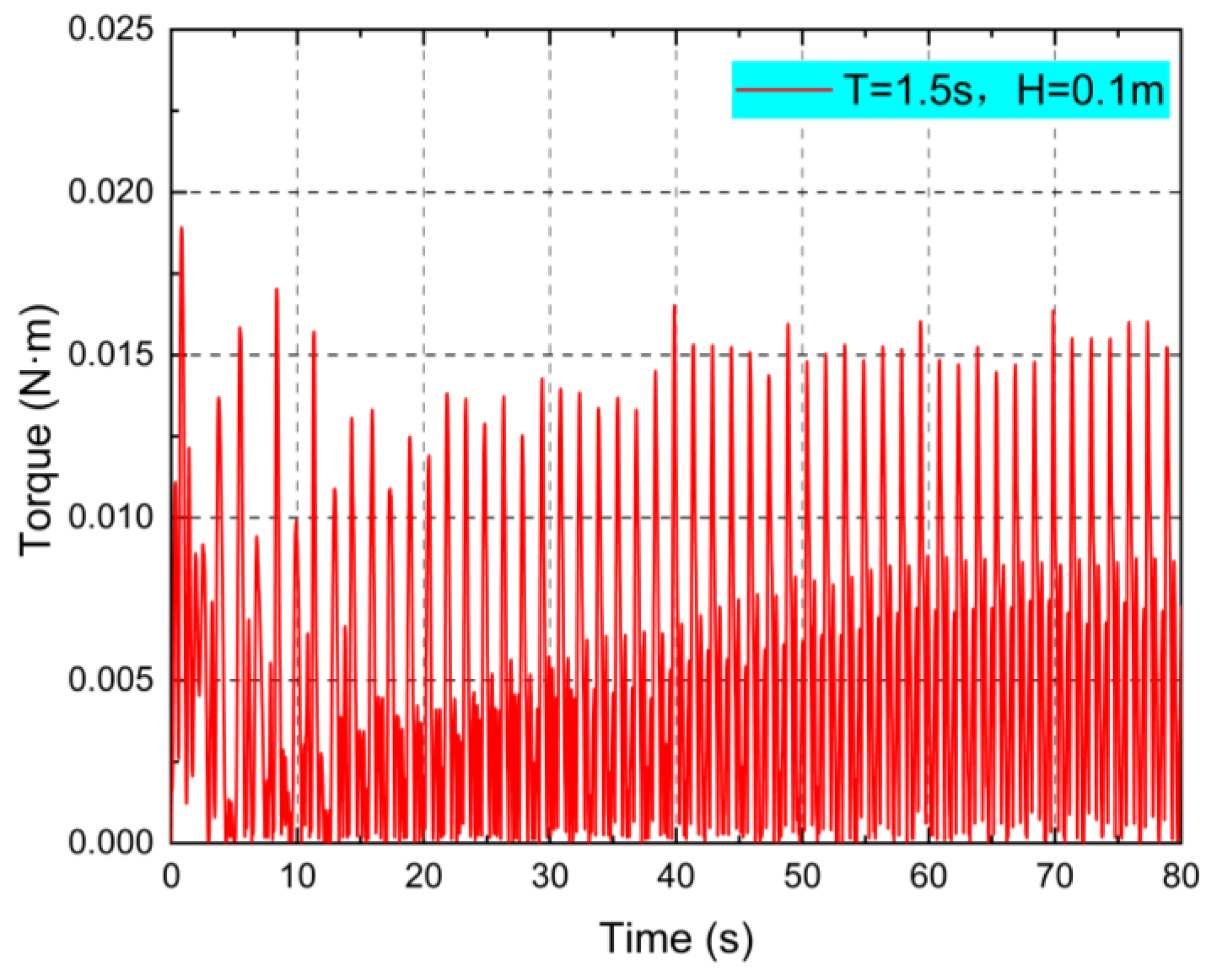
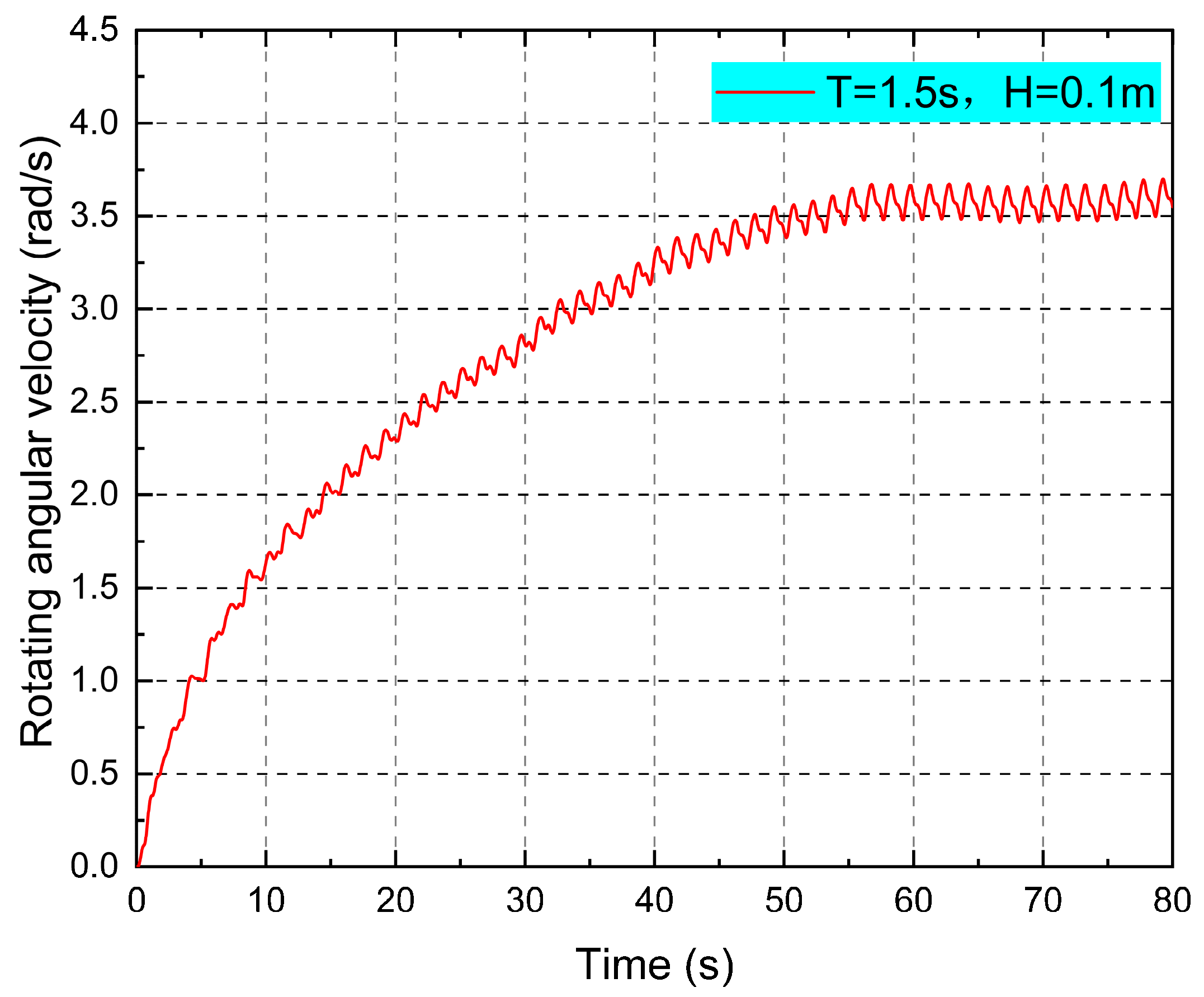
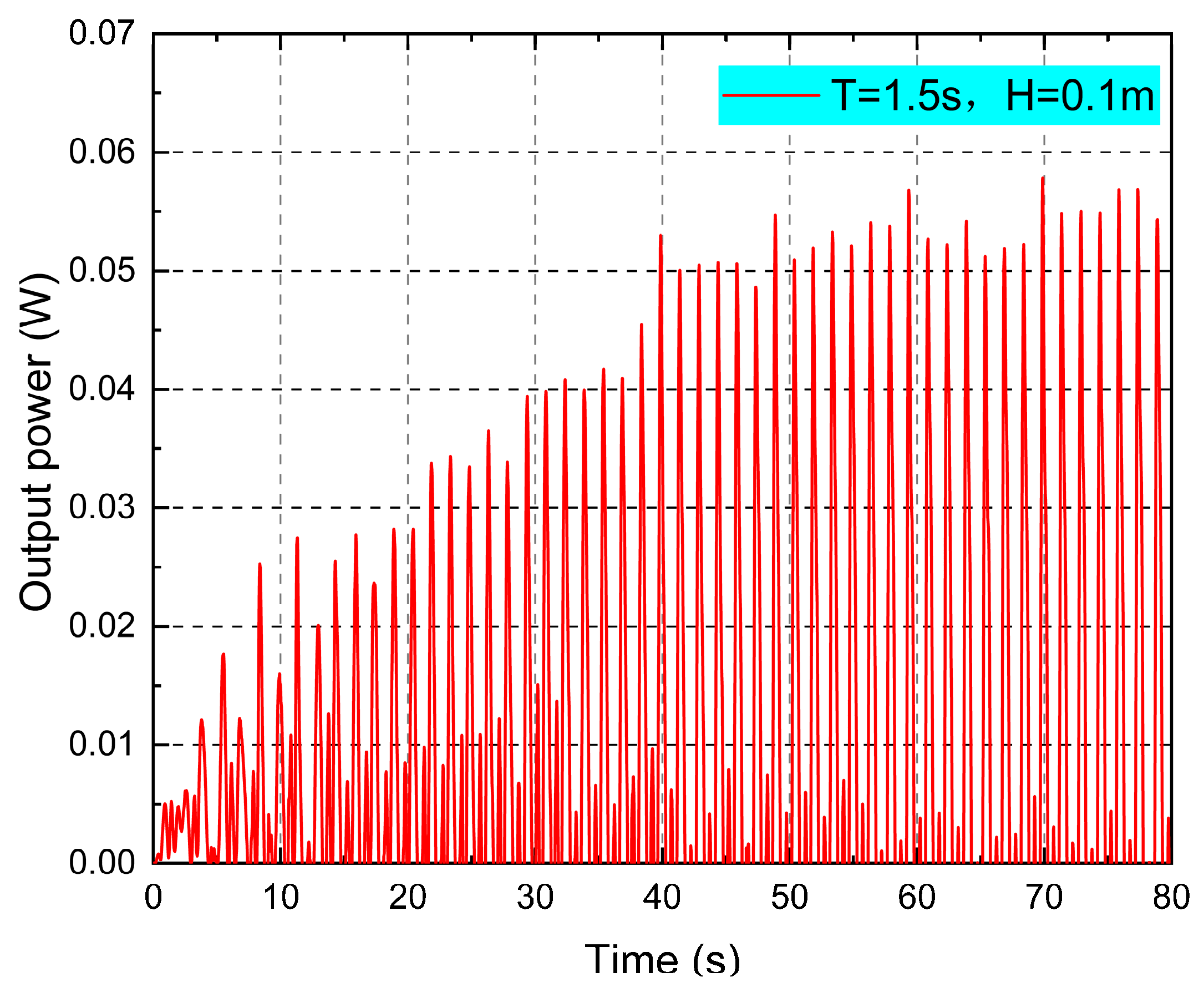
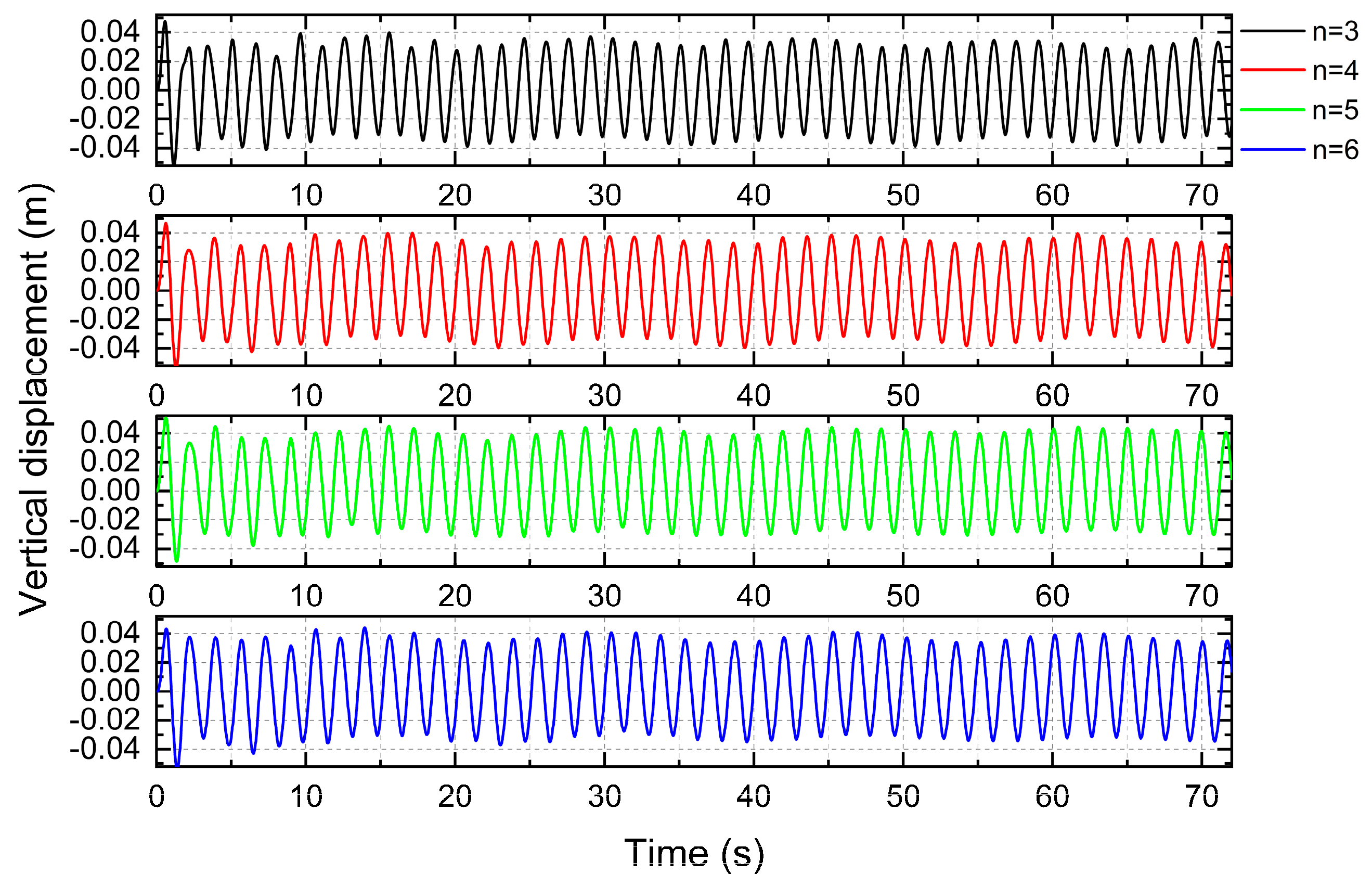
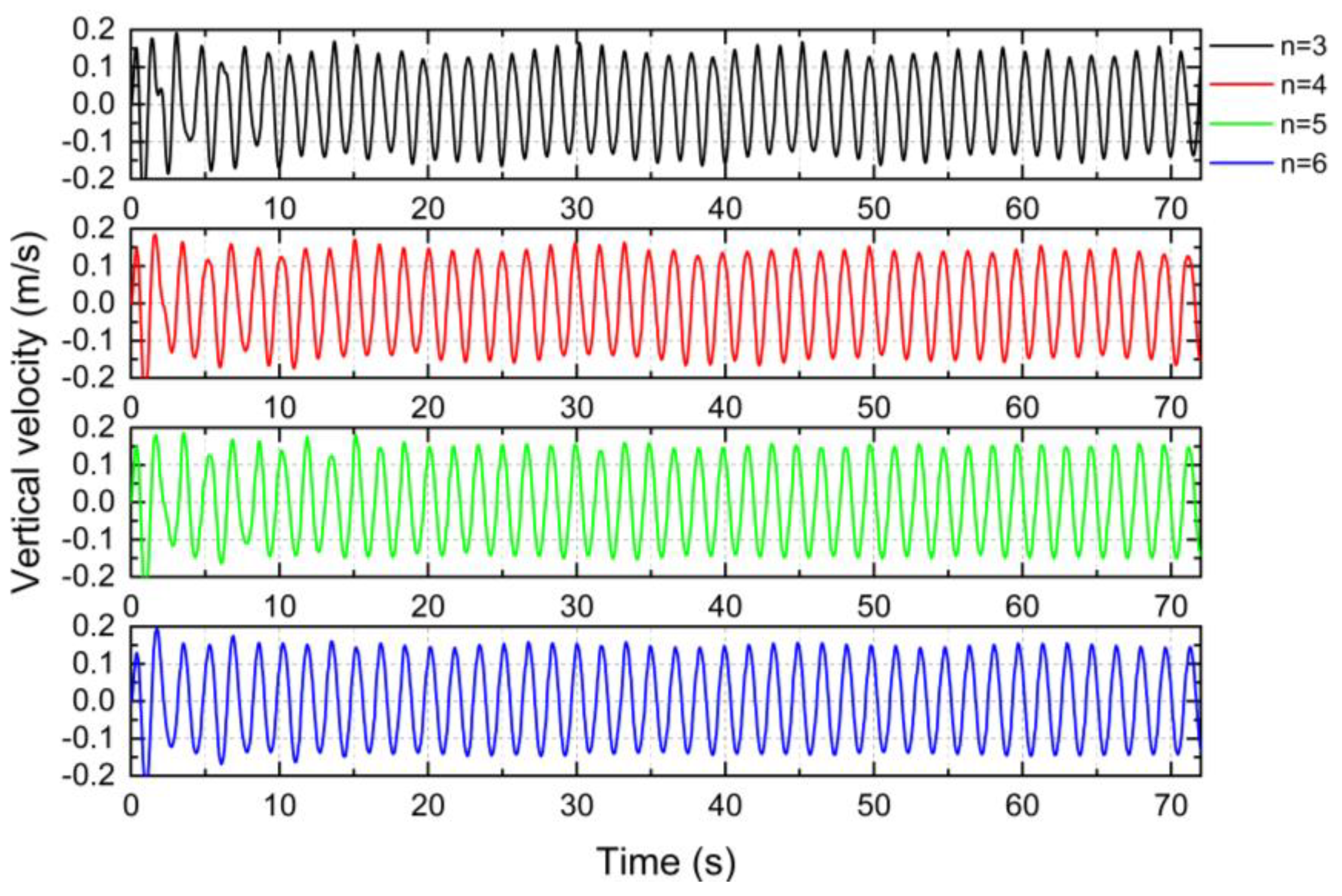
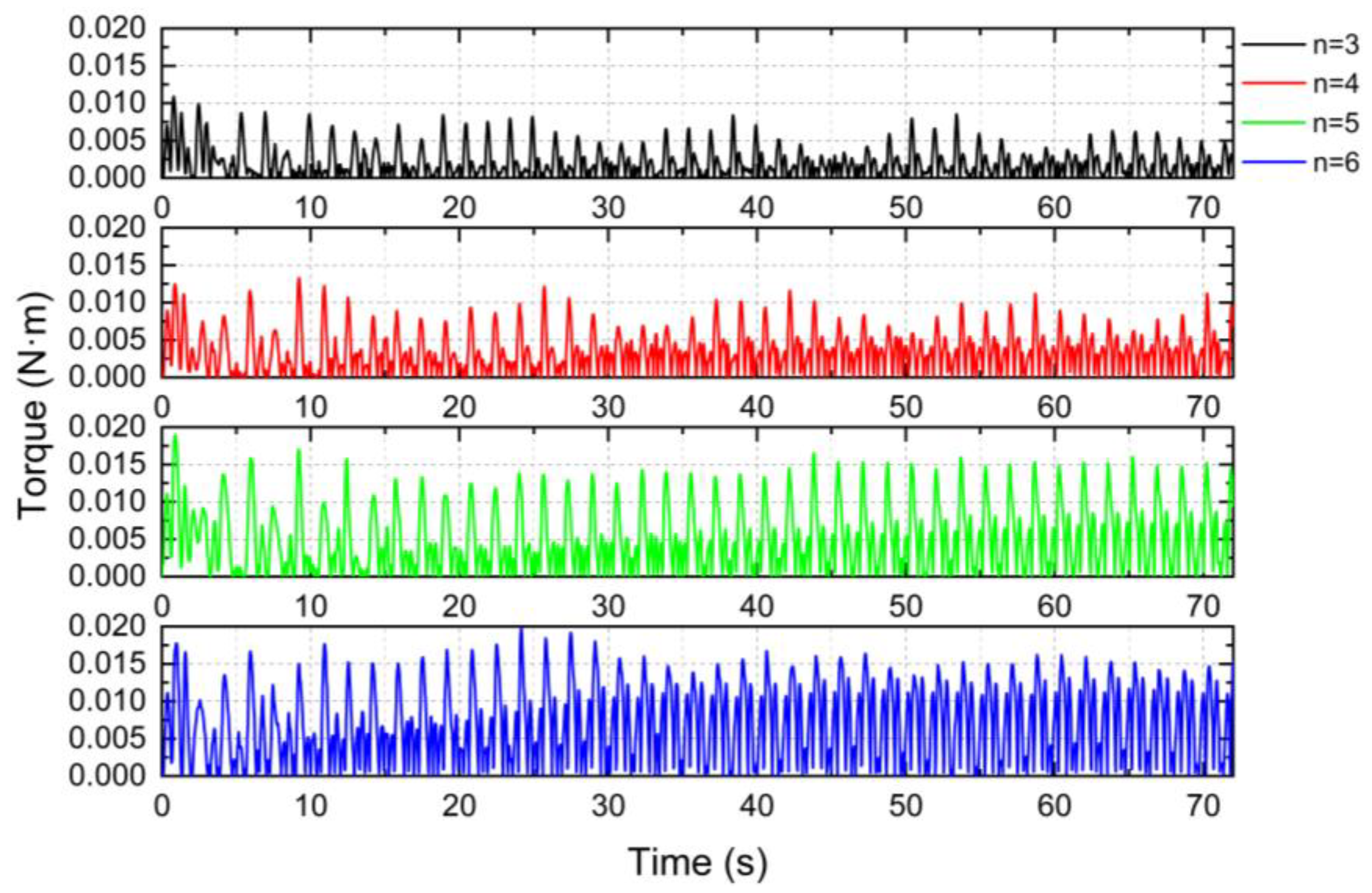
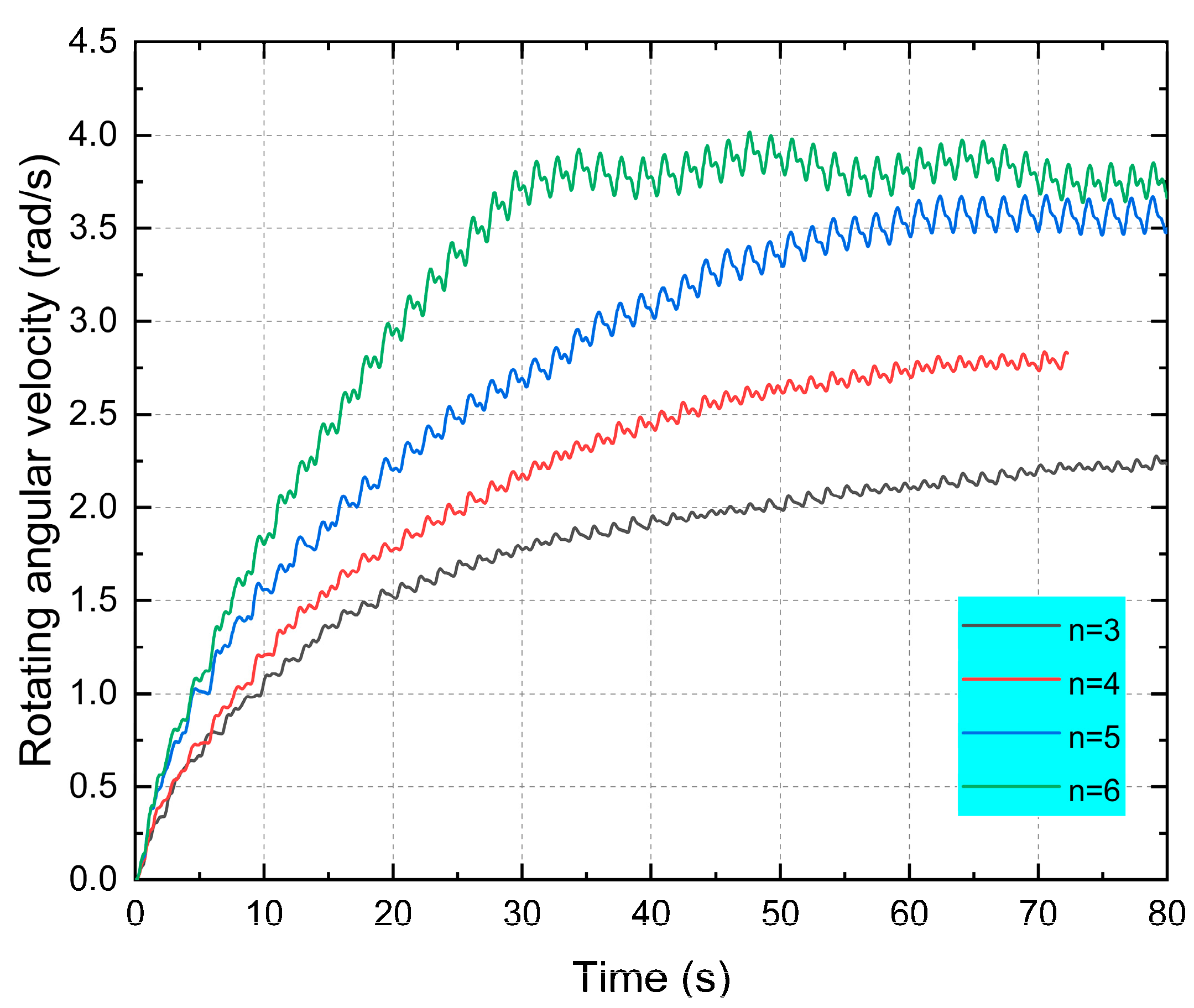
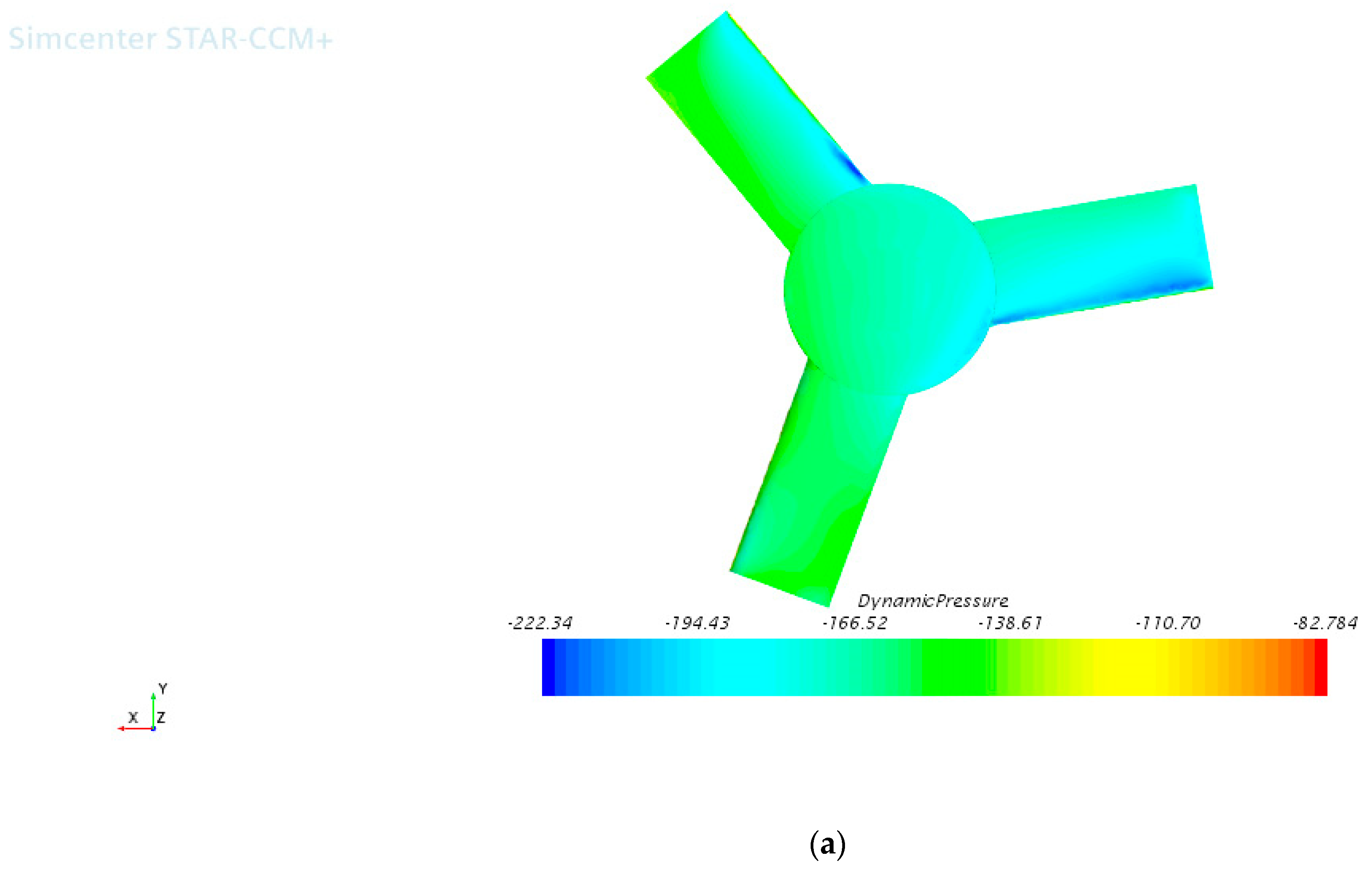
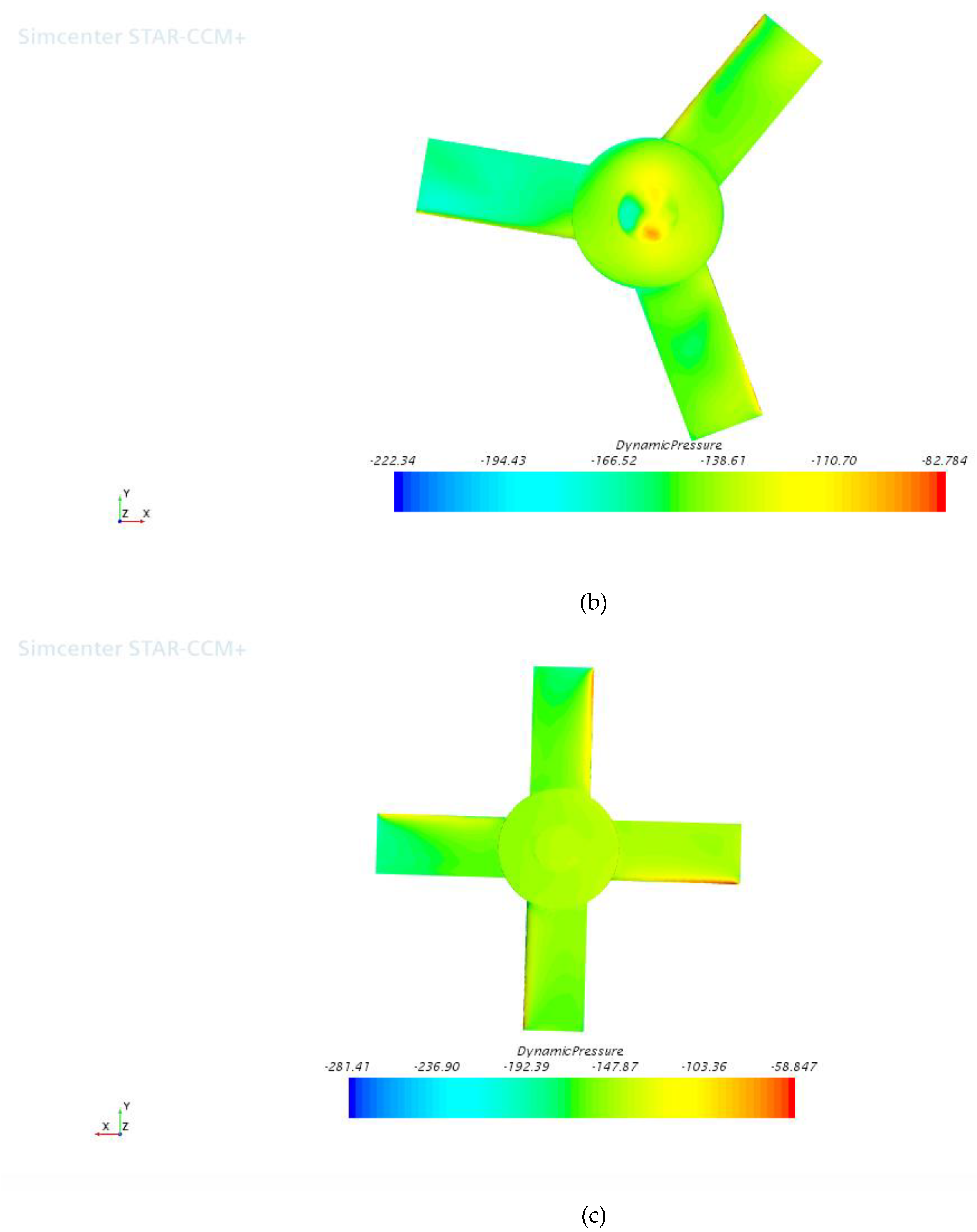
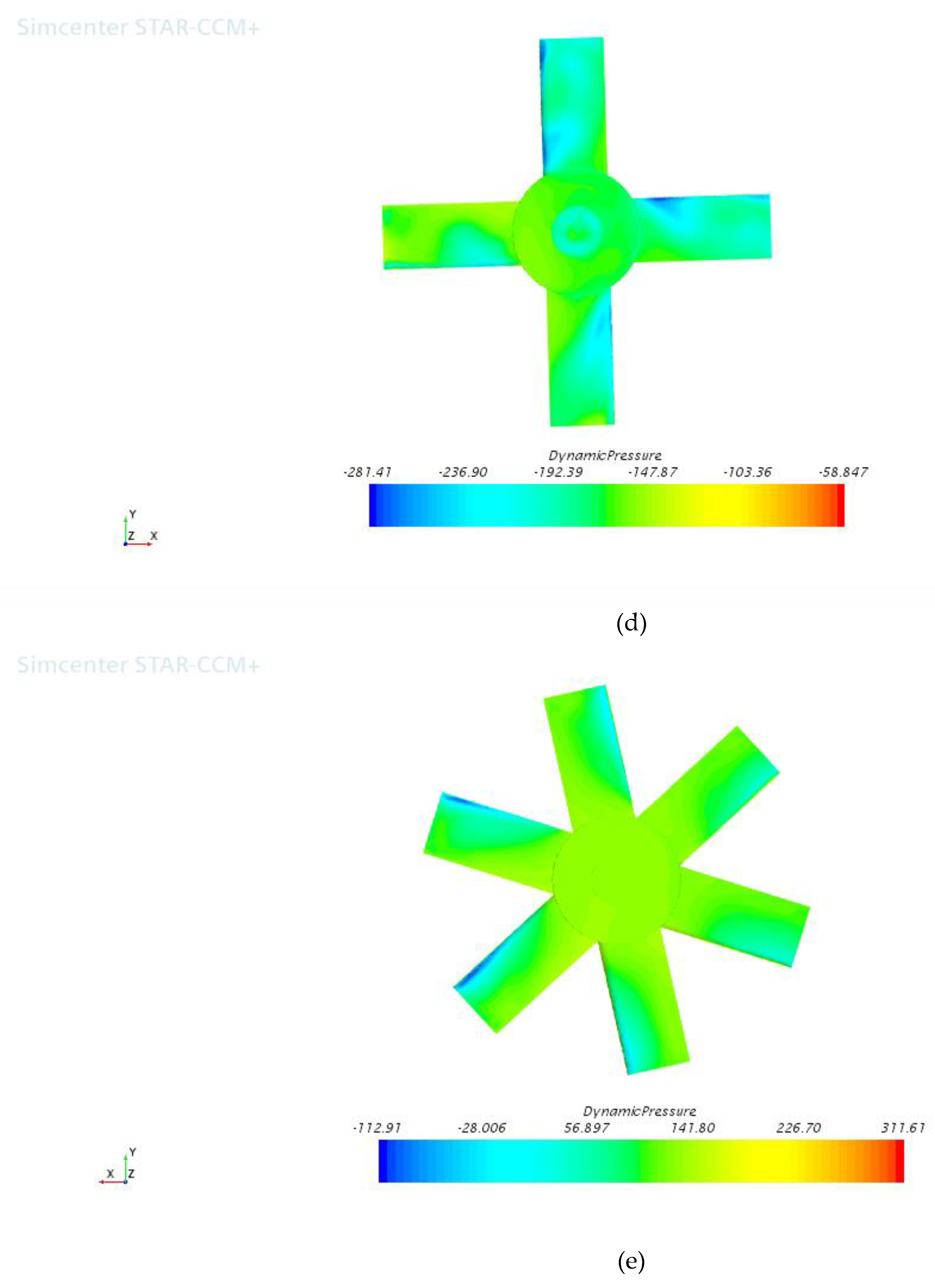
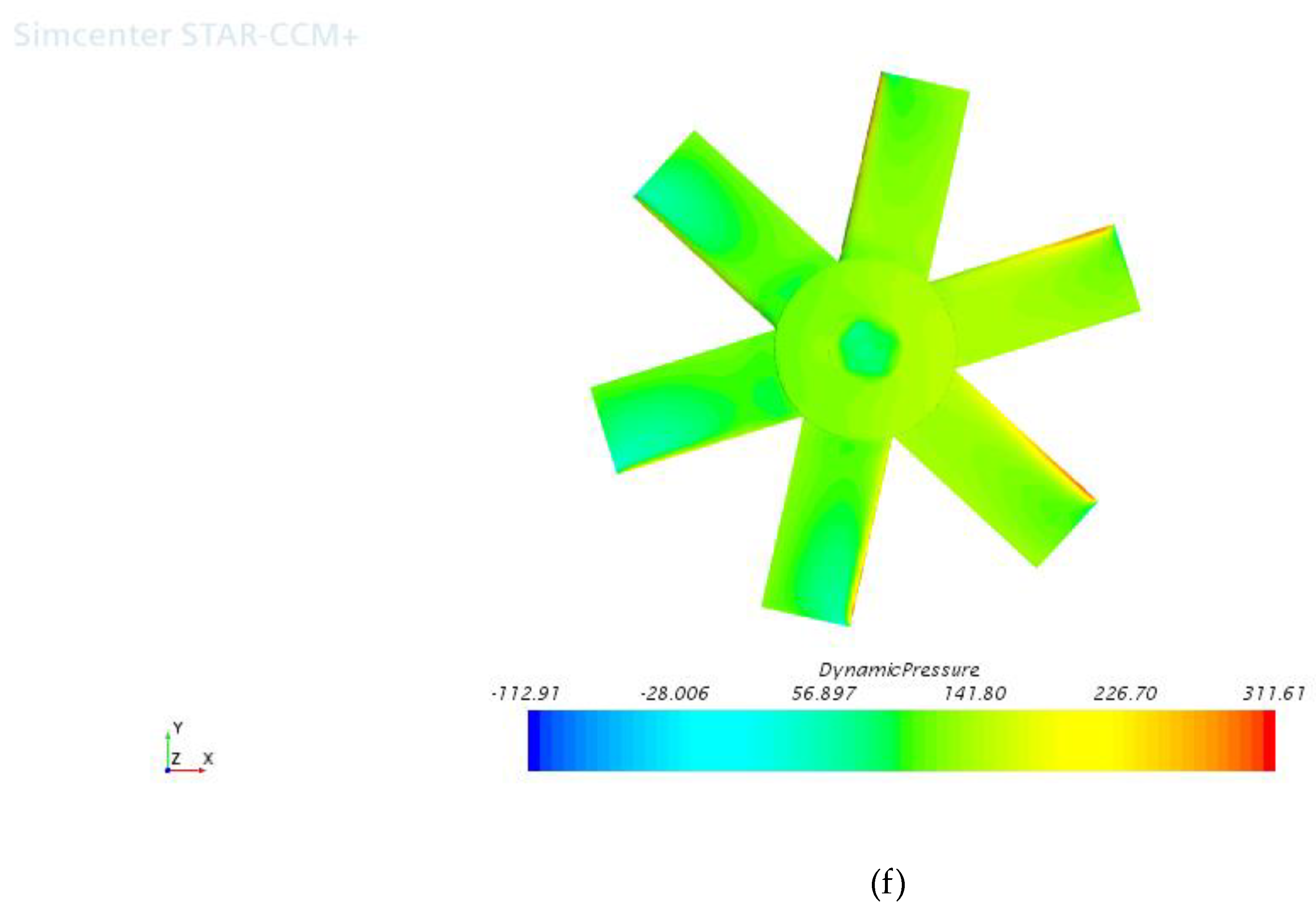
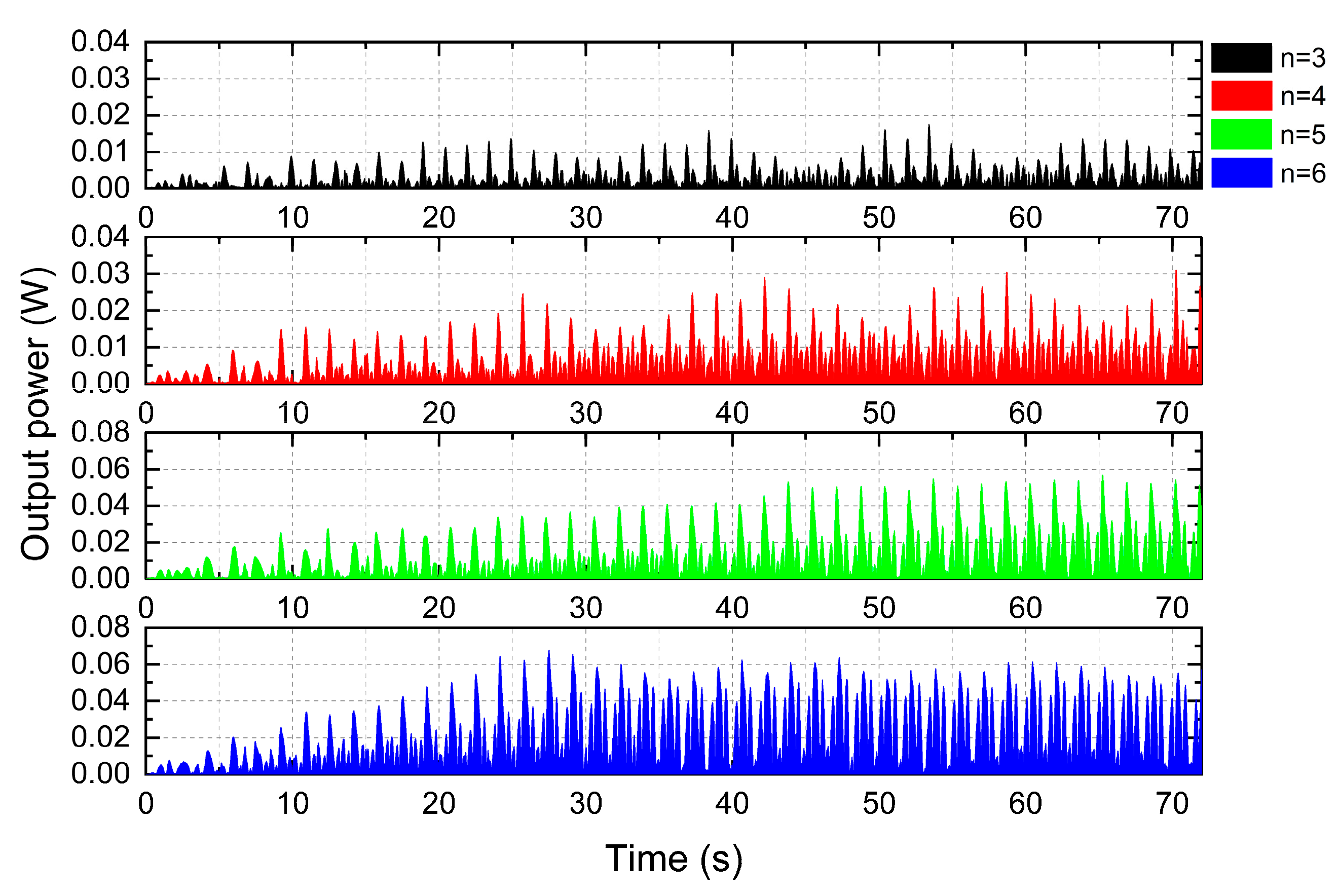
| Parameters | Numerical Value |
|---|---|
| Number of leaves | 5 |
| Chord length/m | 0.05 |
| Wheel radius/m | 0.05 |
| Flange radius/m | 0.05 |
| Wheel thickness/m | 0.03 |
| Combined Parameters | Physical Models |
|---|---|
| Space | Three-dimensional |
| Time | Implicit invariant (math.) |
| Eulerian multiphase flow model | Volume of fluid domain |
| Turbulence model | |
| Other models | Gravity, VOF waves |
| Working Condition | Number of Leaves | Period T(s) | Wave Height (m) |
|---|---|---|---|
| A1 | 3 | 1.5 | 0.1 |
| A2 | 4 | 1.5 | 0.1 |
| A3 | 5 | 1.5 | 0.1 |
| A4 | 6 | 1.5 | 0.1 |
| Working Condition | Amplitude of Pendulum Displacement (m) | Amplitude of Pendulum Speed (m/s) | Amplitude of Rotational Torque (N·m) | Rotational Speed (rad/s) | Power (W) |
|---|---|---|---|---|---|
| A1 | 0.372 | 0.158 | 0.004 | 2.352 | 0.012 |
| A2 | 0.381 | 0.157 | 0.009 | 2.831 | 0.023 |
| A3 | 0.407 | 0.161 | 0.014 | 3.613 | 0.053 |
| A4 | 0.411 | 0.159 | 0.015 | 3.707 | 0.059 |
Disclaimer/Publisher’s Note: The statements, opinions and data contained in all publications are solely those of the individual author(s) and contributor(s) and not of MDPI and/or the editor(s). MDPI and/or the editor(s) disclaim responsibility for any injury to people or property resulting from any ideas, methods, instructions or products referred to in the content. |
© 2023 by the authors. Licensee MDPI, Basel, Switzerland. This article is an open access article distributed under the terms and conditions of the Creative Commons Attribution (CC BY) license (https://creativecommons.org/licenses/by/4.0/).
Share and Cite
Zhang, Y.; Li, D. Parametric Design of a New Float-Type Wave Energy Generator and Numerical Simulation of Its Hydrodynamic Performance. J. Mar. Sci. Eng. 2023, 11, 2192. https://doi.org/10.3390/jmse11112192
Zhang Y, Li D. Parametric Design of a New Float-Type Wave Energy Generator and Numerical Simulation of Its Hydrodynamic Performance. Journal of Marine Science and Engineering. 2023; 11(11):2192. https://doi.org/10.3390/jmse11112192
Chicago/Turabian StyleZhang, Yu, and Dongqin Li. 2023. "Parametric Design of a New Float-Type Wave Energy Generator and Numerical Simulation of Its Hydrodynamic Performance" Journal of Marine Science and Engineering 11, no. 11: 2192. https://doi.org/10.3390/jmse11112192
APA StyleZhang, Y., & Li, D. (2023). Parametric Design of a New Float-Type Wave Energy Generator and Numerical Simulation of Its Hydrodynamic Performance. Journal of Marine Science and Engineering, 11(11), 2192. https://doi.org/10.3390/jmse11112192







